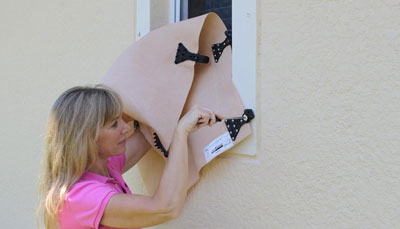Small Missile Fabric vs. Large Missile Impact Screens

Hurricane protection screens developed by HurricaneFabric.com are the 1st hurricane screens to meet and recognize the differences between hurricane screens that are designed for large openings and screens that better protect smaller openings.
The Japanese fishermen who would place woven fishing nets along buildings to protect from typhoons started the hurricane fabric industry. Sometimes the men would double and triple up these nets, depending on the strength of the impending storm.
From these men, we learned that screens have an ability to decelerate objects and wind, prior to taking the brunt force of the impact.
Think about it like this:
If you throw a baseball at a sailboat sail, and it””s a small sail you are aiming at, you may be able to get the baseball to go through if the baseball is thrown hard enough at the corner of the sail, (Especially true if the anchor point is a static gromment – similar to all of our competitors.).
Now think about Hurricane Fabric””s flex clip around that same small sailboat sail. (our clip would have given the sail a fighting chance). Conversely, think about throwing that same baseball at a sailboat sail that is 100 feet tall, the natural luft in the material will decelerate the ball before it has a chance to penetrate (no matter how close you are to that sailboat sail).
Similar to the use of large missile hurricane impact glass and small missile impact glass: we are the first hurricane screen manufacturer to recognize the difference between a large and a small hurricane protection screens. Smaller screens have less surface area to react to an impact – so we have developed a more flexible version of our High Modulus Clip to better handle large missile impacts on smaller openings. Our flex clip aids in the screens ability to decelerate an object. Static anchor points such as gromments used by our competition, do not have this ability.
Many building departments such as Miami/Dade Approval process and Florida Building Code FBC require that screen companies test a large screen. This allowance for one screen size tested, however, was based upon the metal products that had been tested for years where the “larger the accordion shutter”, the weaker it is. Metal panels, accordion shutters, impact glass both small missile and large missile hurricane glass get weaker as they get larger.
Not completely true when it comes to hurricane protection screens. Hurricane Fabric.com’s system is the only system that tests both large and small screens, and the only hurricane screen manufacturer that independently tests (already approved) hurricane hardware.




